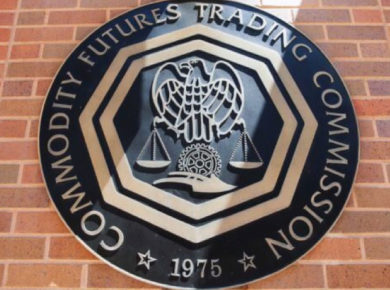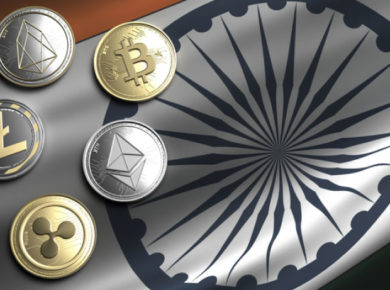Well, folks, Bitcoin is on its way up again–at press time, the price of BTC had climbed past $10,300 and seemed to be giddily moving further up. Price levels this high haven’t been reached since July of last year, when Bitcoin briefly scraped the bottom of $13,000 before crumbling back below $7,000 over the course of several months.
What’s going to come next? Sure, BTC could hit $13,000 this time, or even surpass it–but once again, will the price slowly fall back below that precious $10,000 support level into the $8, 7, 6,000s?
It certainly could–but this time, a number of analysts are saying that this price run is different.
*** Update: my 2 sats on #bitcoin price:
– 2020: btc stays above $8200 (so we are NOT dropping to $6k or $4k levels that others are predicting now)
– May 2020 halving: will be above $10k
– 2021: bull run starts after the halving and tops $100k before Dec 2021#NotFinancialAdvice https://t.co/Zkkma4ZBSd— PlanB (@100trillionUSD) February 10, 2020
Is Bitcoin really a “safe haven”?
The “Bitcoin-as-safe-haven” narrative has also appeared in the news quite a bit since the beginning of the year–basically, it is believed that over time, Bitcoin is becoming an increasingly attractive “risk-off” asset in the face of economic crisis, geopolitical turmoil, and catastrophic world events.
Indeed, there have been many reports from Venezuela, Turkey, Zimbabwe, and other countries that have faced economic crises that Bitcoin is becoming an increasingly attractive option for protecting savings when a country’s national currency is facing hyperinflation.
However, the narrative picked up even more momentum at the beginning of the year: in early January, a US drone strike killed Iranian major general Qasem Soleimani of the Islamic Revolutionary Guard Corps. When Iran struck two US military bases in Baghdad less than a week after Soleimani’s death, the price of Bitcoin rose from $7000 to $8500.
The correlation between the US-Iran tensions and a rise in the price of BTC was also supported by data from Google Trends during the week ending on January 8th, which showed that the search term “Bitcoin Iran” had spiked twice–once on January 4th, the day after Qasem Soleimani’s death, and again on January 8th, following Iran’s strike on US military bases. By the end of the week, searches for “Bitcoin Iran” had risen a total of roughly 4,450%.
While the tensions eased–and the price of BTC dropped, temporarily, as well–BTC-as-safe-haven appeared again with the growth in global coverage of the Coronavirus, a previously-unencountered virus strain that had affected more than 45,000 people and caused more than 1,000 deaths globally at press time.
However, the role of the Coronavirus news cycle on Bitcoin is not entirely clear. “It’s an interesting time in the world with the global risk from the coronavirus playing on the equity markets, and nations responding with huge fiat injections,” Yusaka Senga told Finance Magnates.
“Retrofitting the data to a narrative”?
Indeed, Cynthia Huang, chief executive of Altcoin Fantasy, told Finance Magnates that there is also a narrative that “growing mistrust from Chinese about the government due to the handling of the Corona Virus could be causing more people to move their money to what they consider safe havens,” including Bitcoin. Even if this isn’t the case, speculation from outside markets that this is happening could lead some to buy BTC in an attempt to make a quick profit.
However, Senga said that although “we have seen some elements of BTC acting as a safe haven asset and decoupling from equity markets…with such a new asset type it’s hard to tell, and always prone to retrofitting the data to a narrative. Time will tell.”
Jeremy Britton also pointed out that geopolitical events and incidences like the Coronavirus are not likely to have major long term effects on Bitcoin: “it seems like every year there is a different killer virus (Bird flu, SARS, ebola, coronavirus, et cetera),” he said. “There are wars in many countries, and corruption abounds. To quote the wise king: ‘There is nothing new under the sun.’”
However, “geopolitical events over the past ten years have been arguably similar to the last 1000 years, and all we know for sure, is that over each century, paper money devalues by 90%+, whereas scarce commodities (gold, silver, bitcoin) increase in value over time.”
”Fear and greed will drive daily prices”–but the role of emotion may diminish over time
Still, “as with stocks and bonds, fear and greed will drive daily prices. Traders are either irrationally exuberant or irrationally depressed. Prices fluctuate more in crypto, as there is no governing body like the SEC to investigate companies, and no NYSE or LSE to shutter markets when things go berserk,” Britton commented.
“During mass panics like the global financial crisis, 9/11, and wartime, the local stock market can easily cease trade for a few days or even weeks. This allows rational decisions rather than panic to rule once more. Crypto does not have checks and balances, nor does it have a protective governess, which leads to wilder swings, and greater potential for gains or losses.”
At the same time, however, Bitcoin’s burgeoning “critical mass” of long-term hodlers and smart money could signal that geopolitical turmoil may have less of an effect on BTC prices over time: “mass adoption grew in 2019 when the number of Americans who held at least one crypto wallet doubled. One can compare early adoption of crypto to early adoption of other tech like the first people who had cellphones, and the first people who had the internet in their home.”
“Within the next 5-7 years, crypto will have critical mass. Fans of traditional fiat currency could compare crypto to a virus which doubles every year and will eventually take over the world.”
The usage base that BTC has already accumulated may have already reduced volatility in price: “thankfully, markets are a lot more temperate than they have been previously and the knee jerk reactions to news are more subdued,” Yusaka Senga noted.
“Black swan events are also less common and less disruptive, and more trading is conducted on regulated and insured exchanges. [This] reduces the wild emotional overreactions and fears this time around.” The term “black swan events” refers to unpredictable events that are beyond what is normally expected of a situation that can have potentially severe consequences. The term was popularized by Nicholas Taleb in The Black Swan: The Impact Of The Highly Improbable.
Regulatory acknowledgment may be pushing BTC upward
And indeed, regulation does seem to have a hand in normalizing and legitimizing the use of cryptocurrencies, which could be having a stabilizing effect on Bitcoin–if not fueling the price outright.
The effect of government regulation and even acknowledgment of crypto has proven to be quite powerful: in the fourth quarter of 2019, Chinese President Xi Jinping called for his country to adopt blockchain technology “as an important breakthrough for independent innovation of core technologies.” The statement is thought to have contributed to a mini-price rally that briefly brought BTC past the $10,000 mark.
In the United States, crypto is also in the regulatory air: in addition to several pieces of crypto-related legislation that are currently making their way through the House of Congress, Securities and Exchange Commissioner Hester Peirce, also known as “Crypto Mom”, recently proposed a three-year grace period for startups wishing to raise funds through a token sale.
In a talk at the International Blockchain Congress, Peirce says initial token sales may sometimes require time in order to determine whether or not their underlying asset constitutes a security: “the analysis of whether a token is offered or sold as a security is not static and does not strictly inhere to the digital asset.”
What global events–regulatory and otherwise–do you see as supporting Bitcoin’s price run? Do you think that this price run is the “real deal”? Let us know in the comments below.











